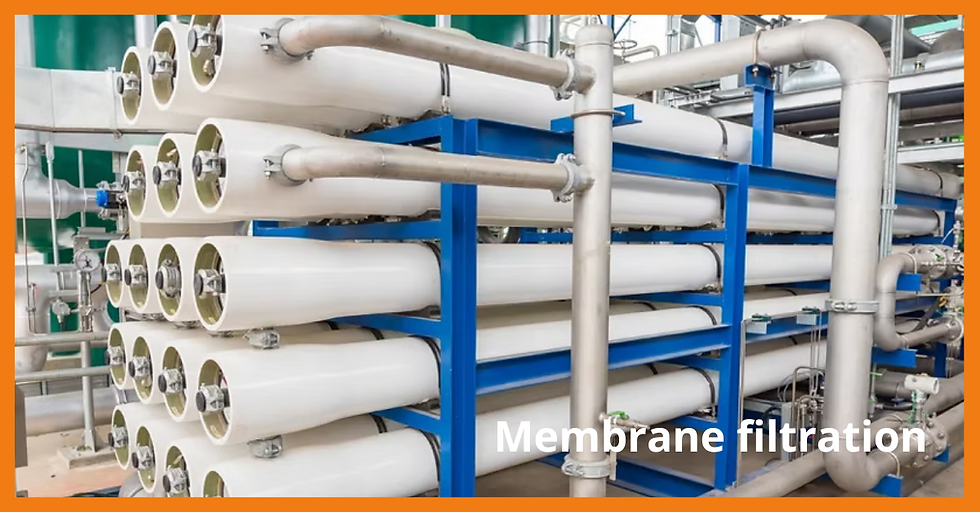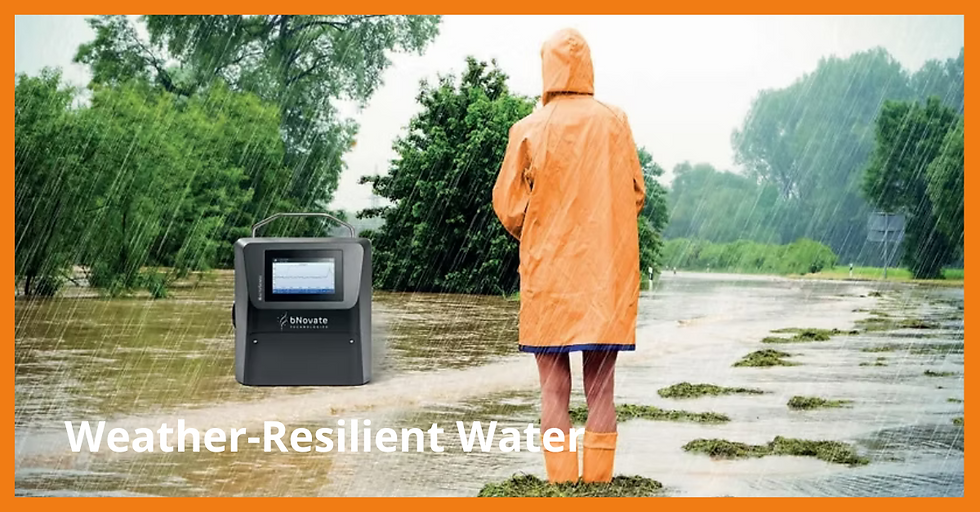VBNC bacteria: challenging detection (and a breakthrough solution) in the food & beverage industry
- Martinique Jobin
- Jul 17
- 4 min read

Many bacterial species have been discovered to exist in a viable but non-culturable (VBNC) state, in which cells are alive but unable to grow on standard agar media. As a result, conventional plate count methods for detecting microbial contamination frequently fail to identify these bacteria.
This leads to an underestimation of total viable cells in water, environmental, or clinical samples, posing a hidden risk to public health and concerns regarding water and food safety due to their undetectability in standard culture testing methods. Traditional culturing techniques have long been employed in the food, water, and pharmaceutical industries, but they have significant limitations.
The inability to detect VBNC pathogens under standard laboratory conditions compromises microbiological safety. This highlights the need for more sensitive detection methods in critical sectors, including water treatment, pharmaceutical manufacturing, and food and beverage production.
In response to this challenge, emerging technologies like BactoSense provide innovative solutions.
BactoSense is an automated flow cytometry-based technology that enables the rapid and reliable detection of microbial cells, including VBNC bacteria. Its real-time monitoring capabilities are reshaping how industries detect and respond to microbial threats.
An underestimated threat to water safety
VBNC bacteria pose a significant threat due to their ability to survive under harsh environmental conditions while evading detection by conventional methods.
When environmental conditions become unfavourable, such as exposure to disinfectants, extreme temperatures, or nutrient deprivation, certain bacteria enter a VBNC state to preserve viability without active growth.
Once favourable conditions return, these bacteria can "resuscitate" and regain pathogenic potential.
For instance, pathogens such as:
E. coli, commonly associated with faecal contamination, can enter a VBNC state in treated drinking water, posing a risk of waterborne disease.
Vibrio cholerae is known for causing waterborne outbreaks, especially in untreated or poorly managed water supplies.
Campylobacter jejuni, a leading cause of bacterial gastroenteritis, can enter a VBNC state in poultry products and water systems.
These bacteria can remain undetected during routine testing, only to cause illness upon resuscitation.
Challenges for the water industry:
Vibrio cholerae and E. coli are of significant concern in the water sector. These pathogens can persist in treated or distribution-stage water systems in a VBNC state and evade standard water quality monitoring techniques.
This creates a silent yet dangerous threat to public health, particularly in municipal water supplies, the bottled water and beverage industries. Their enhanced resistance to antimicrobials and environmental stressors further complicates the detection and control of these pathogens.
How BactoSense addresses VBNC detection
BactoSense leverages flow cytometry, which distinguishes between live and dead cells based on cellular activity and membrane integrity, capabilities that standard plate counts lack. This allows BactoSense to detect VBNC cells that retain metabolic activity even if they do not form colonies on agar plates.
By automating the entire process, from sampling to result generation, BactoSense significantly reduces human error and ensures high-throughput, real-time data. This is especially valuable for water utilities and food processors who require continuous microbial surveillance.
Industry applications and VBNC examples:
Several industries stand to benefit from integrating BactoSense into their safety protocols:
Bottled Water and Beverage Industry: Detection of E. coli and Pseudomonas aeruginosa in a VBNC state can prevent the distribution of contaminated products.
Municipal Water Treatment: Continuous monitoring for Vibrio cholerae, E. coli, and Legionella pneumophila, bacteria known to persist in VBNC forms in water distribution systems.
Pharmaceutical and Cosmetic Manufacturing: Monitoring for environmental contaminants like Pseudomonas and Burkholderia cepacia, notorious for entering VBNC states and compromising sterile production environments.
Dairy and Meat Processing Plants: Identifying potential biofilm-forming VBNC bacteria that can contaminate equipment and products.
Industry Testimonials and Demand
Many companies and Municipal water treatment facilities have acknowledged the limitations of conventional culturing and the need for automated, sensitive systems like BactoSense.
Bruno Burkhalter, Process Engineer at WVRB (Switzerland):
‘’BactoSense is a good measuring instrument that we have been using for two years. BactoSense enabled us to learn a lot about our groundwater aquifers, allowing us to move the new well/pump sites to an even better location (hydro-geologically better). The groundwater quality is safely and reliably monitored”
Severn Trent Water (UK):
‘’Using this rapid online flow cytometry, we can detect changes in bacteria counts 24/7, meaning we can become proactive to prevent failure and keep our customers' water supplies the best we can.”
Sandy Chan, Process Engineer, Sydvatten AB (Sweden):
"BactoSense is an easy and rapid way to measure the total bacterial content in your water. This opens up the opportunity to follow all the bacteria in our drinking water system, that we have never been able to do before.’’
These real-world endorsements underscore the growing industry shift toward automated, culture-independent detection methods for routine and advanced microbial monitoring.
Conclusion
The threat posed by VBNC bacteria is real and persistent, particularly in municipal water treatment, pharmaceutical and cosmetic manufacturing, and the bottled water and beverage industries, where safety is of paramount importance.
Standard plate culturing methods are no longer sufficient for fast and comprehensive microbial monitoring. Technologies like BactoSense, which combine automation with advanced flow cytometric analysis, offer a powerful solution to this challenge.
By rapidly detecting VBNC bacteria in real-time, BactoSense helps prevent outbreaks and contamination, and enhances operational efficiency and safety.
As awareness grows around VBNC-associated risks, adopting innovative tools like BactoSense will become essential for safeguarding public health and ensuring regulatory compliance.










Comments